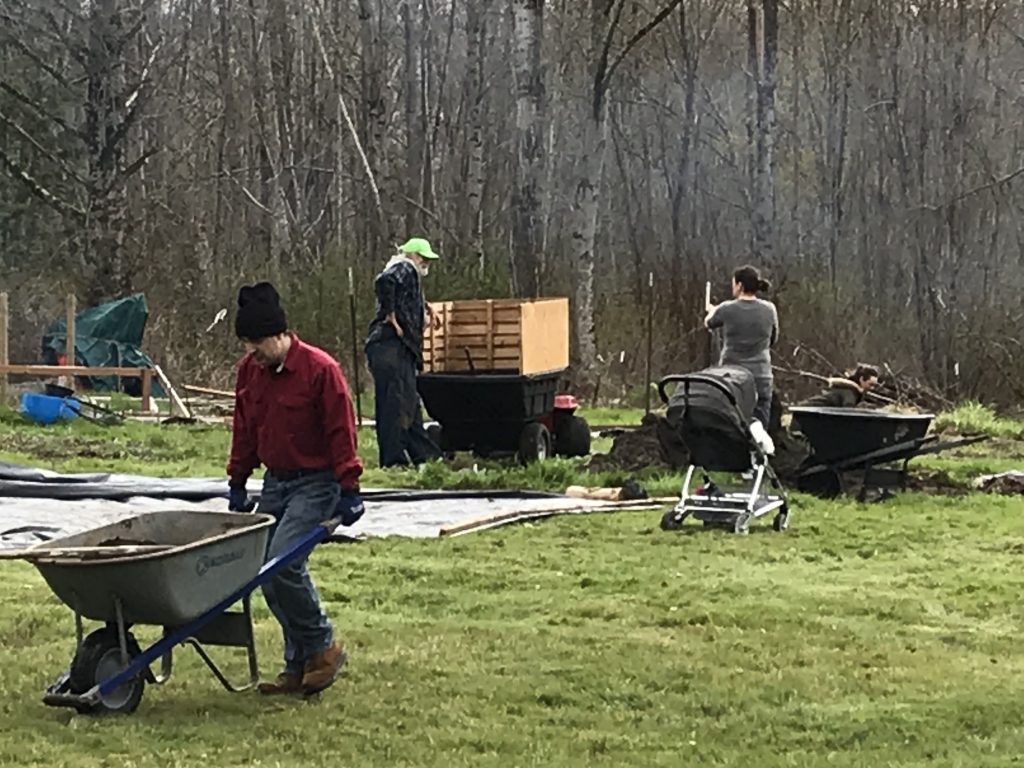Forming in a Pandemic

Who could have predicted a pandemic, right? I mean, we all know that unexpected things will come up when you are working on a project as big as a cohousing community, but a pandemic? How on earth do you do any marketing when you can’t meet with people? That is the dilemma we find ourselves in in April, May and June of 2020.
Sunnyside Village Cohousing is a wanna-be cohousing community in Marysville, Washington, about 35 miles north of Seattle. We have property and a small but dedicated group of folks determined to live in a cohousing community. There are two existing cohousing communities in our county, Songia and Sharingwood both over 20 years old, and no new cohousing since. Both Songia and Sharingwood have been amazingly supportive of us, offering their time, expertise and tours.
For the last two years we have typically sent out some publicity and gathered people into one of the local public library meeting rooms, enticed them with homemade cookies, tea and a powerpoint presentation of our vision. We also tried being sponsors at a couple conferences (The NW Ecobuilders Conference and Tilth, both in the fall of 2019) But all that, of course came to a screeching halt in March of 2020 thanks to COVID-19.
While we are re-grouping and consulting our advisors and planning new strategy, we continue to do what we are passion about: vegetable gardening. We don’t have a site plan yet, so we are gambling on which area will be safe once the heavy equipment comes rolling in, but we’ve made an educated guess. And we’ve planted our perennials, berries and fruit trees along the edge: that’s raspberries, strawberries, thornless blackberries, goji berries, horseradish, rhubarb, paw paw trees, peach, and plum. Still in the plan but not yet planted are grape vines (seedless eating grapes) and apple trees. Our vegetable garden is flourishing now: kale, chard, arugula, lettuce, broccoli, cauliflower, cabbage, onion, leeks, shallots, and garlic,. And of course tomatoes. The tomatoes have their own hoop house, with clear plastic draped across the hoops to keep them dry from rain. We’re just starting to harvest them now. Are you with me still? I suspect only a dedicated gardener (or former) would have actually read that entire paragraph.
 What does our garden do for us? It gives us meaningful time on our land, and helps connect us to it. It gives us meaningful work for us to do together – of course at a social distance and in the outdoor breeze. And it gives us wonderful things people can take home with them: rhubarb and strawberries for pie, lettuce and greens for dinner. Our community can share work together (which, personally, I find more team building than any artificial activities), and bring part of the community home with them to nourish them and their families in a healthy way.
What does our garden do for us? It gives us meaningful time on our land, and helps connect us to it. It gives us meaningful work for us to do together – of course at a social distance and in the outdoor breeze. And it gives us wonderful things people can take home with them: rhubarb and strawberries for pie, lettuce and greens for dinner. Our community can share work together (which, personally, I find more team building than any artificial activities), and bring part of the community home with them to nourish them and their families in a healthy way.
While their parents are weeding, the children pay on the dirt pile, or run in the grass, or find worms and little green frogs. They’re connecting to nature in a way that everyone feels wonderful about.
And during our break times, in lawn chairs under the awning (at a good social distance!) we can listen to and watch the eagles in their nest just off our land. The mama and papa eagle have produced two babies that we easily hear screeching for their dinner.
This land is already a community. It is already nourishing our community.
Category: garden
Tags: community, Connecting, forming communities, garden, story
Views: 4954

